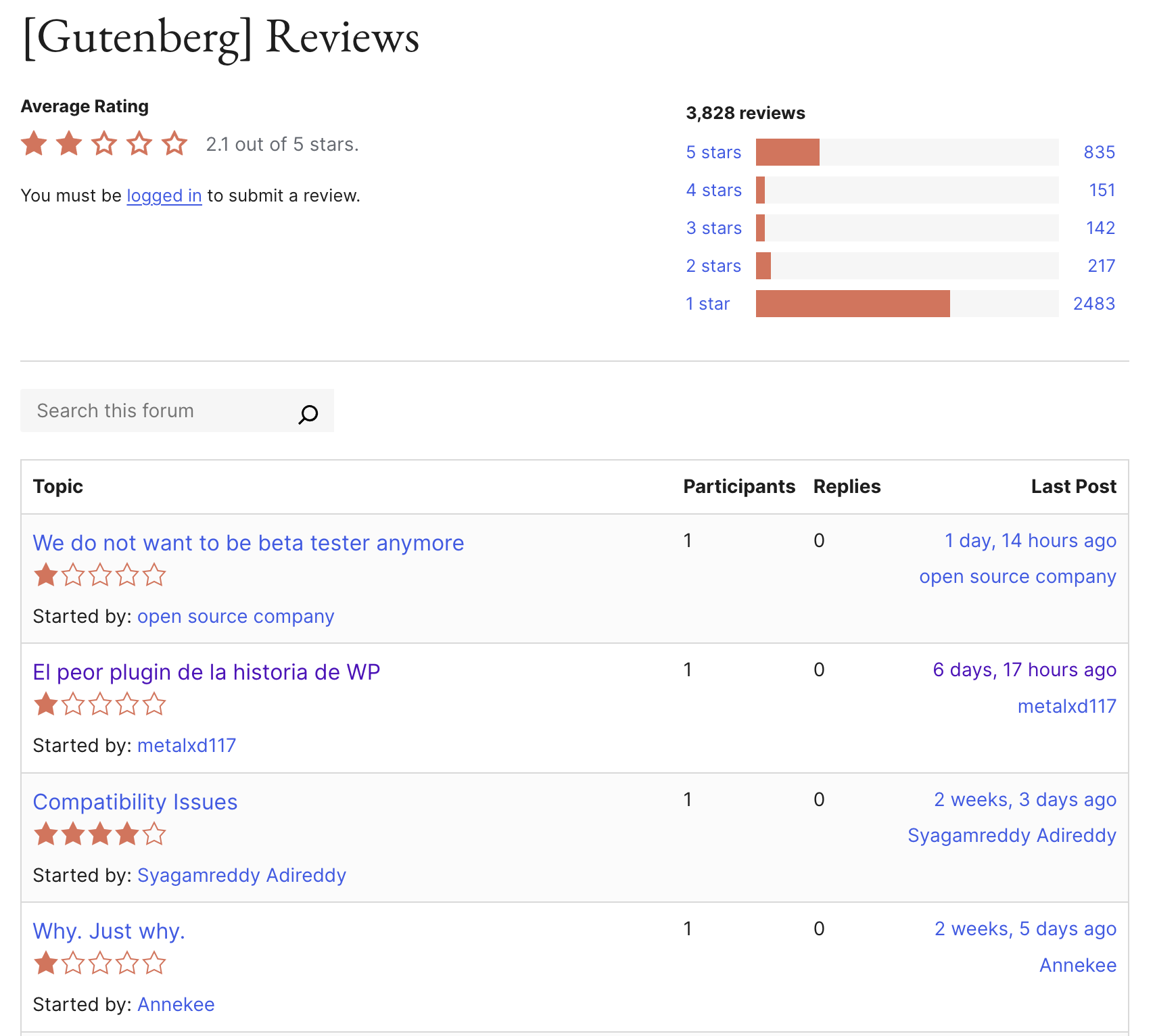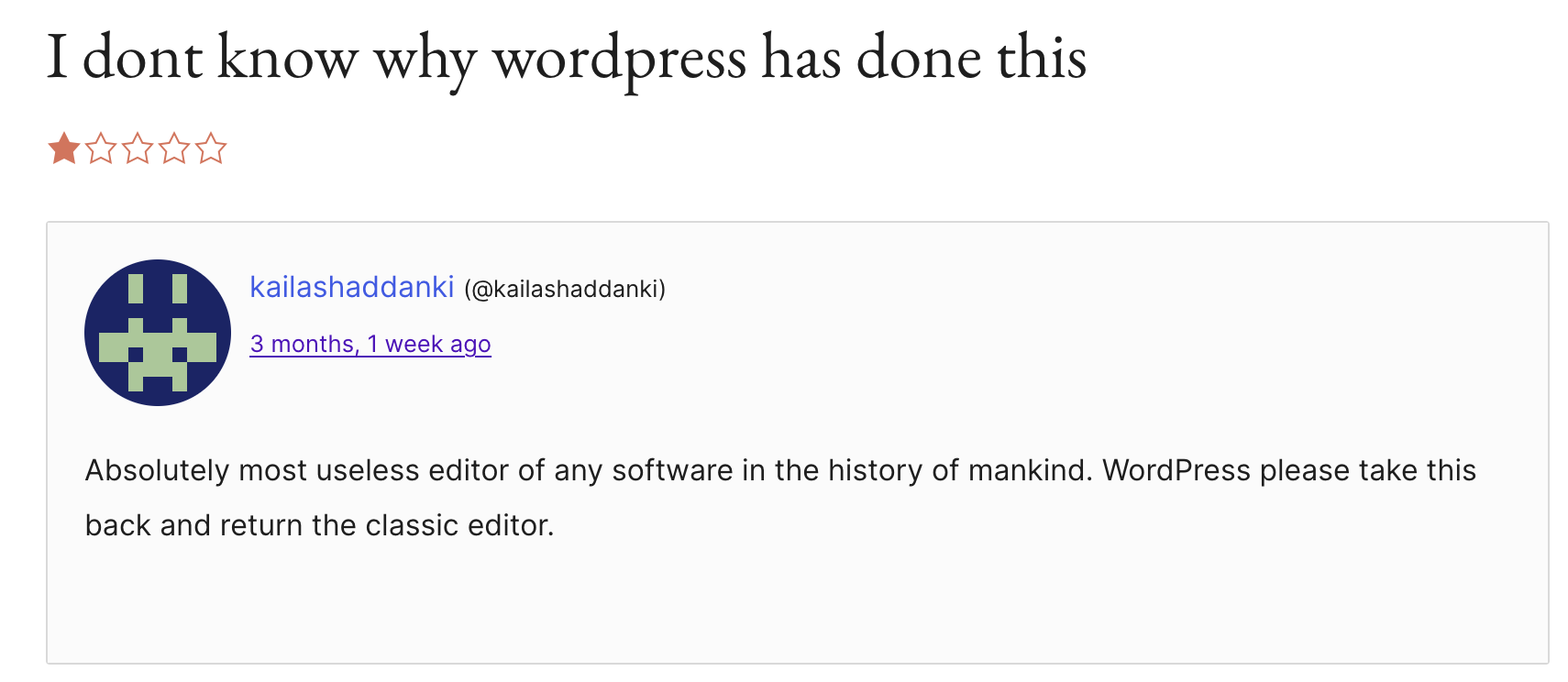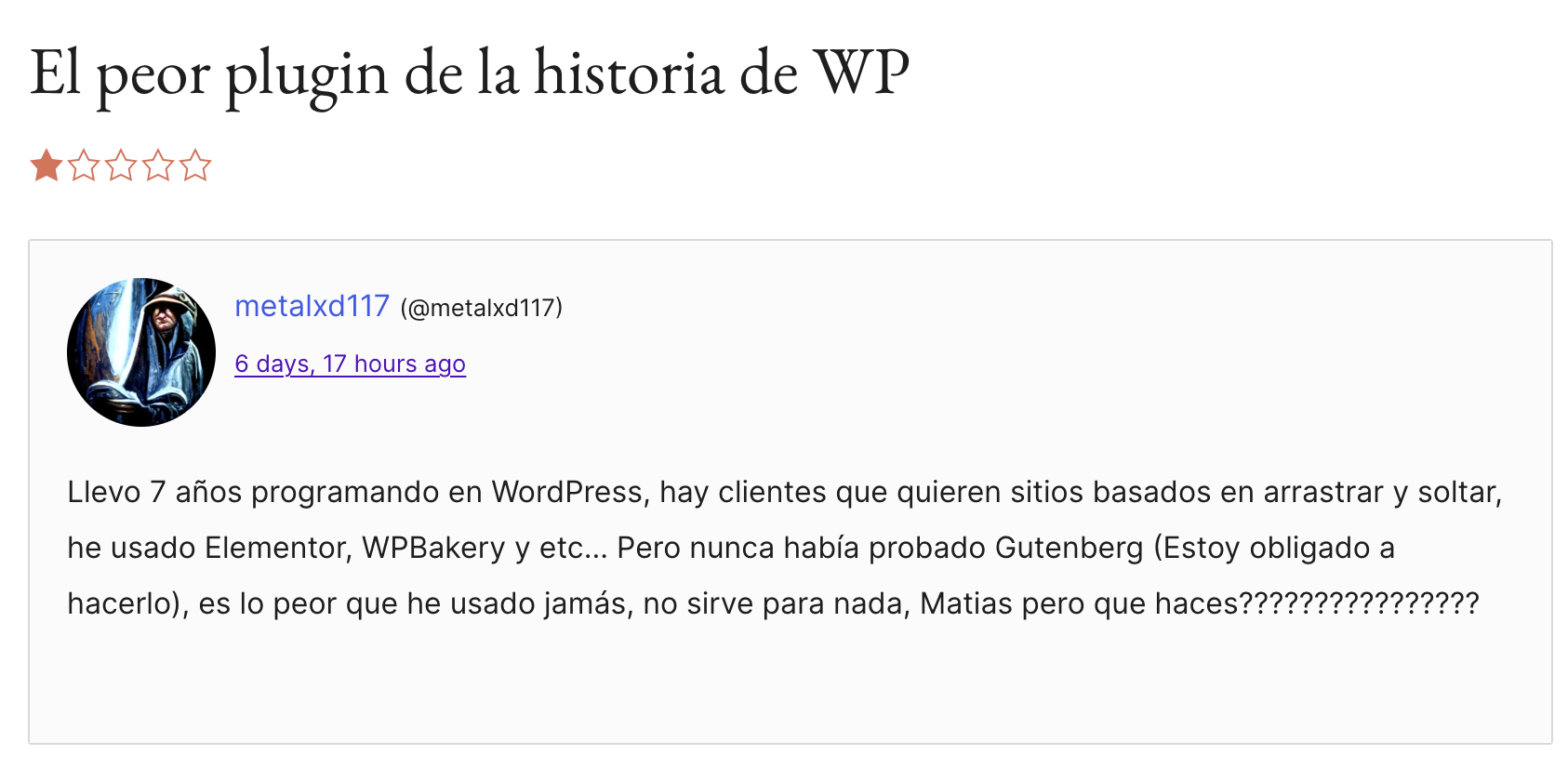It’s been over six years since WordPress introduced Gutenberg—the so-called “block editor” that promised to revolutionize how users build content. But the reality? It’s a mess. A bloated, frustrating, half-finished mess that’s been forced onto millions of websites without ever truly earning its place.
If Gutenberg were a standalone plugin today, it would be dead in the water. Just look at the reviews on WordPress.org: as of this writing, it has a 2-star average rating—with the majority being 1-star complaints from frustrated users who have tried, again and again, to make it work. And it still doesn’t.

A Six-Year-Long Beta Test
Since its release in December 2018, Gutenberg has felt less like a stable editing experience and more like an ongoing beta test. Every update breaks something. Every “improvement” comes with new usability issues.
It’s not just that it doesn’t feel finished—it’s that it actively gets in the way of content creation. Basic tasks like spacing, column layouts, or nested content blocks become time-consuming puzzles. What should take minutes drags into hours.


WordPress has always touted flexibility and ease of use. Gutenberg does the opposite. It replaces tried-and-true editing workflows with hidden panels, broken previews, and mystery spacing.
Most WordPress Users Still Reject It
Despite being the default editor for years, many WordPress professionals—and even casual users—still install the Classic Editor plugin to avoid Gutenberg entirely. And that plugin, by the way, has millions of active installs, even though WordPress plans to deprecate it eventually. That tells you everything.
If a new default tool needs a widely-used plugin just to turn it off, that’s not success. That’s rejection.
The Promise of Modern Editing, Undelivered
Gutenberg was pitched as a visual builder that would rival modern tools like Webflow, Ghost, or even Elementor. But it never came close. It’s neither intuitive enough for beginners nor powerful enough for pros. It lacks finesse, control, and consistency.
Want to tweak a layout? You’ll hit invisible padding. Want to reuse a block? You’ll fight with Global Styles that don’t behave. Want a modern site preview? Good luck—the editor styling often breaks completely depending on the theme.
Developers Are Stuck in the Middle
Theme developers and agencies have had to spend countless hours making Gutenberg behave—wrapping blocks in editor-styles-wrapper classes, disabling core block styles, overriding editor fonts just to stop them from affecting the admin UI. Even the typography in the dashboard often breaks because a theme’s fonts leak into Gutenberg.
"We’re not designing a site—we’re fixing the editing environment just to get back to zero."
— Feedback from a frustrated WordPress developer
Trying to use TailwindCSS? Better wrap every style override with Gutenberg-specific context classes to stop it from leaking into the admin. It’s an architectural mess.
The Reviews Speak for Themselves
Take 10 minutes to scroll through the Gutenberg plugin reviews and you’ll see a consistent theme: frustration, confusion, and abandonment. Some highlights:
- “Still buggy after all these years.”
- “I dread using this editor.”
- “It constantly breaks layouts and removes my custom HTML.”
- “A solution looking for a problem.”
And yes, there are some 5-star reviews—but many read like PR plants or users who like the idea of blocks but haven’t actually tried to use it for anything beyond a paragraph and image.
It’s Time to Admit the Truth
Gutenberg is not the future of web editing. It's a failed experiment that should have remained a plugin. WordPress should have taken a cue from the modern platforms it was trying to emulate—clean interfaces, visual consistency, and a stable foundation. Instead, it delivered an unstable editor that alienates the very users it was meant to serve.
If you're a business relying on your website, ask yourself: is Gutenberg helping your team move faster, or slowing them down with quirks and bugs?
If it’s the latter, it’s time to move on.
We’ve stopped building client sites in WordPress altogether unless there’s a compelling legacy reason. Instead, we use headless CMS solutions like Storyblok or Contentful with frontend frameworks like Astro, delivering modern websites that are fast, secure, and easy to manage—without fighting the editor.






